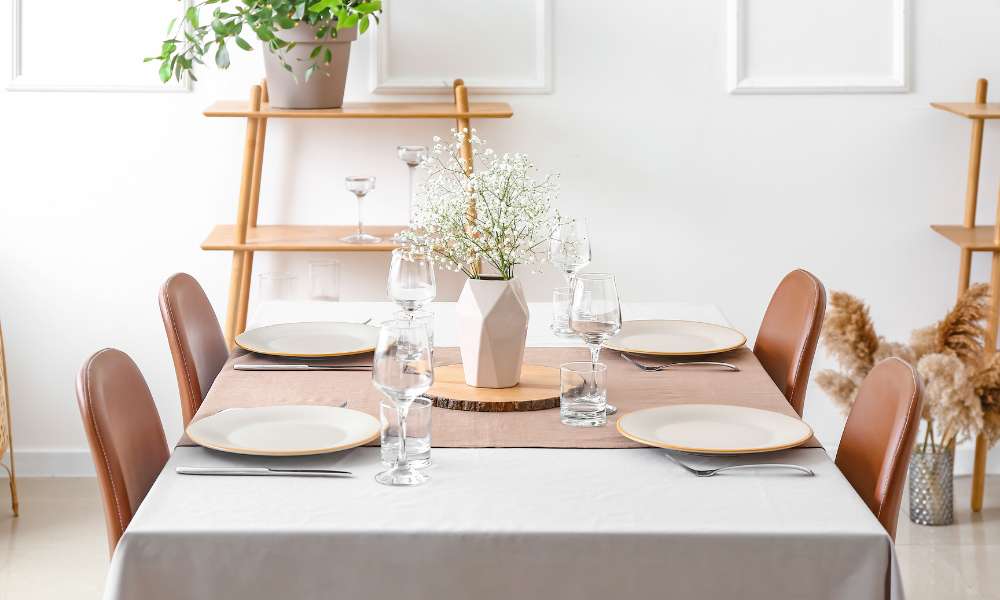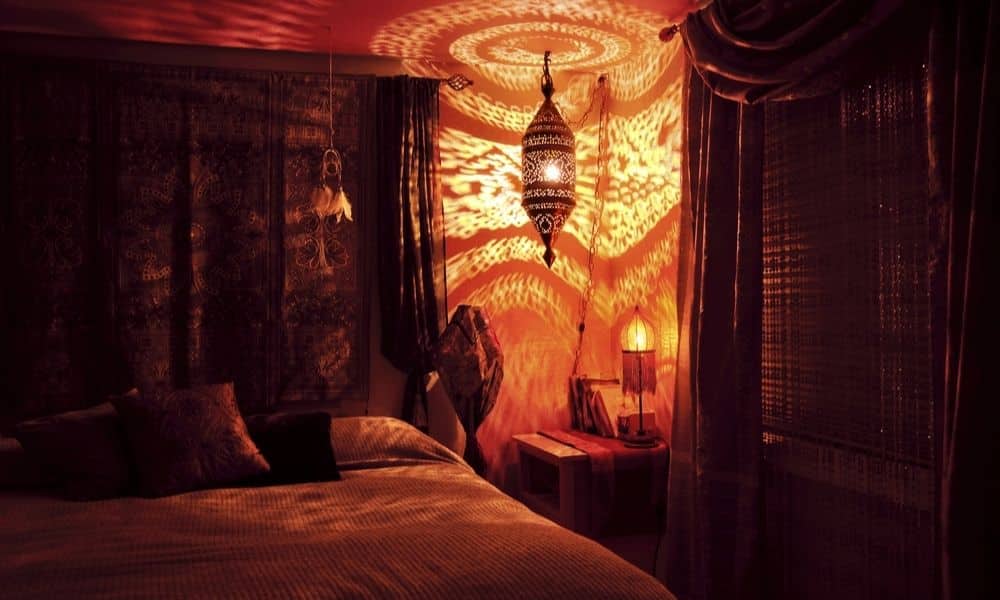A beautifully set dining table can transform any meal into a special occasion, whether it’s a casual family dinner or an elegant dinner party. The art of setting a dining table goes beyond simply placing plates and utensils; it involves creating an inviting and harmonious arrangement that enhances the dining experience. Understanding the principles of table setting can help you impress your guests, make your meals more enjoyable, and express your style. This guide will walk you through the steps of setting a dining table, from choosing the right tableware to adding those final personal touches, ensuring your table is both functional and aesthetically pleasing.
1. Choosing the Right Tableware
Selecting the appropriate tableware is crucial to setting a dining table that looks both inviting and functional. The types of tableware you need typically include plates, bowls, and utensils, each serving a specific purpose during the meal. For instance, dinner plates are essential for the main course, salad plates for appetizers, and soup bowls for soups or stews. Utensils such as forks, knives, and spoons should be chosen based on the courses being served. Matching your tableware to the occasion is equally important. For a formal dinner, opt for elegant, coordinated sets that convey a sense of sophistication. In contrast, casual gatherings might call for more relaxed, colorful, or mismatched pieces that add a fun and lively touch to the meal. By thoughtfully selecting and matching your tableware, you set the stage for a memorable dining experience that aligns perfectly with the tone of your event.
2. Selecting the Perfect Tablecloth or Placemat
Choosing the perfect tablecloth or placemat is an essential step in creating an inviting dining table. There are various types of tablecloths and placemats to consider, each offering different textures and aesthetics. For formal occasions, a crisp, white linen tablecloth exudes elegance and sophistication. For more casual settings, consider using colorful or patterned tablecloths that can add a touch of personality and warmth to your dining area. Placemats are a great alternative or addition to tablecloths, offering individual settings that can protect your table and add visual interest. When selecting colors and patterns, it’s important to coordinate with the overall theme and color scheme of your dining space. Neutral colors like white, beige, or gray are versatile and can match any tableware. For a bolder look, opt for vibrant hues or intricate patterns that can become the focal point of your table setting. By thoughtfully choosing the right tablecloth or placemat, you enhance the overall dining experience, making it both visually appealing and cohesive.
3. Placing the Dinnerware
Proper placement of dinnerware is key to setting a dining table that is both functional and visually appealing. Start with the dinner plate, which should be centered in front of each chair. If you are serving multiple courses, stack the salad plate or soup bowl on top of the dinner plate. The arrangement differs slightly between formal and informal settings. For formal dinners, a charger plate can be placed beneath the dinner plate, adding an extra touch of elegance. In informal settings, the use of fewer plates and bowls is common, keeping the table simple and uncluttered. Regardless of the occasion, ensure that each piece is aligned and spaced evenly to create a balanced look. The correct positioning not only contributes to the overall aesthetic but also makes it easier for guests to enjoy their meals comfortably. By following these guidelines, you can set a table that impresses and delights your guests, whether for a casual family meal or a formal dinner party.
4. Arranging the Flatware
Arranging flatware correctly ensures a seamless dining experience and adds to the table’s overall elegance. The general rule is to place utensils in the order of use, from the outside in. Knives go to the right of the dinner plate, with the cutting edge facing inward. Spoons are placed to the right of the knives, while forks are set to the left of the dinner plate. For a formal setting, the dessert fork and spoon can be positioned above the dinner plate. Remember to include only the flatware necessary for the planned courses to avoid clutter. Proper placement helps guide guests through the meal effortlessly, enhancing both convenience and style.
5. Setting the Glassware
Selecting and positioning the right glassware is crucial for a well-organized and aesthetically pleasing dining desk. Typically, a water glass is placed directly above the knives to the right of the dinner plate. If serving wine, position the wine glass slightly to the right and below the water glass. For a formal setting, you may also include a separate glass for red wine and another for white wine, arranged in a diagonal line from the water glass. For informal meals, a single multipurpose glass can suffice. Proper placement ensures that guests can easily reach for their drinks, enhancing the overall dining experience. The thoughtful arrangement of glassware not only reflects attention to detail but also adds a touch of elegance to the table.
6. Adding Napkins
Incorporating napkins into your table setting adds both functionality and a decorative touch. There are various napkin folding techniques to consider, ranging from simple folds to intricate designs. A neatly folded napkin can enhance the table’s appearance and show your attention to detail. Placement options for napkins include on the plate, beside the plate, or even in a glass for a more creative presentation. Placing the napkin on the plate often serves as a centerpiece, especially when using an elaborate fold. Positioning it beside the plate provides a straightforward and accessible option for guests. For a touch of elegance, placing a napkin in a glass can create a vertical element that adds visual interest to the table. Each method offers a unique way to complement your table setting and elevate the dining experience.
7. Incorporating Centerpieces
Centerpieces play a pivotal role in enhancing the dining table’s aesthetic and setting the tone for the occasion. For formal dinners, elegant floral arrangements or sophisticated candle setups are ideal, providing a touch of refinement and grace. Casual gatherings might benefit from more relaxed centerpieces such as seasonal fruits, rustic lanterns, or simple greenery. The size and placement of the centerpiece are crucial; it should be proportionate to the table and not obstruct guests’ views or conversations. Ideally, the centerpiece should be low enough to allow for easy interaction across the table. By carefully selecting and positioning your centerpiece, you create a focal point that ties the table setting together and adds a cohesive, inviting atmosphere to your dining experience.
8. Adding Personal Touches
Personal touches can transform a standard table setting into a memorable and intimate dining experience. Name cards and menus are excellent additions, adding a touch of sophistication and making guests feel special. Personalized elements, such as family heirlooms or themed decor, can further enhance the table’s uniqueness. For instance, using vintage china or silverware passed down through generations can evoke a sense of nostalgia and warmth. Themed decor, such as seasonal accents or custom-made centerpieces, can reflect the occasion’s spirit and your style. These thoughtful details not only make your guests feel valued but also create a distinctive and inviting ambiance that sets your dining desk apart.
9. Setting Up for Special Occasions
Setting up your dining table for special occasions requires thoughtful adjustments to reflect the significance of holidays, birthdays, or other celebrations. Tailoring the setup to the event can make the gathering more festive and memorable. For holidays, incorporating thematic elements such as seasonal colors, holiday-specific decorations, and festive tableware can create a cohesive and spirited look. For birthdays, personalized touches like custom name cards, balloons, or a themed centerpiece can add a celebratory feel. It’s important to balance these elements with the table’s overall functionality, ensuring that decorations enhance rather than clutter the space. By thoughtfully adjusting your table setup and incorporating thematic elements, you can create a warm, inviting atmosphere that perfectly suits any special occasion.
10. Considering Table Space
Ensuring adequate table space for each guest is essential for a comfortable and enjoyable dining experience. It’s important to allow enough room for each place setting, typically about 24 inches per person, to prevent overcrowding and ensure guests can dine with ease. Balancing functionality with aesthetics involves carefully arranging dinnerware, flatware, and glassware to maximize space while maintaining an attractive layout. Avoid overloading the table with too many decorations or large centerpieces that can encroach on dining space. Thoughtful consideration of table space ensures that each guest has enough room to dine comfortably, while still appreciating the table’s visual appeal and overall ambiance. By striking this balance, you create a harmonious dining environment that is both practical and pleasing to the eye.
11. Lighting the Table
The lighting of your dining table significantly influences the overall ambiance and dining experience. Different types of lighting, such as candles, lanterns, and overhead fixtures, can be used to achieve various effects. Candles are perfect for creating an intimate, warm glow that adds a touch of romance and elegance to the setting. Lanterns, whether vintage or modern, offer a cozy and charming feel, suitable for both indoor and outdoor dining. Overhead lighting, including chandeliers or pendant lights, provides a well-lit environment that can be adjusted with dimmers to set the desired mood. The key to creating the right ambiance is to balance the lighting to suit the occasion, ensuring it is neither too harsh nor too dim. Thoughtful lighting enhances the table’s aesthetic, making the dining experience more enjoyable and visually appealing for your guests.
12. Final Touches
Before your guests arrive, it’s important to add the final touches to your dining desk to ensure everything is perfect. Start with a quick checklist: check that all dinnerware, flatware, and glassware are clean and correctly positioned. Ensure the centerpiece is well-placed and not obstructing views. Verify that napkins are neatly folded and in the right place, whether on the plates, beside them, or in glasses. Make sure name cards and menus are accurately positioned, adding a personal touch. Adjust the lighting to create the desired ambiance, and double-check that there’s enough space for each guest to dine comfortably. These final touches help create a welcoming and polished table setting, making your guests feel special and ensuring a memorable dining experience.
13. Common Mistakes to Avoid
When setting a dining table, avoiding common mistakes can significantly enhance the dining experience. One major error is overcrowding the table with too many items, which can make it difficult for guests to find space to eat comfortably. To prevent this, ensure that each place setting has ample room and avoid using overly large centerpieces that take up too much space. Another common mistake is using mismatched or inappropriate tableware, which can detract from the table’s overall aesthetic and coherence. It’s important to choose tableware that matches the occasion and complements each other in style and color. By steering clear of these mistakes, you can create a table setting that is both functional and visually appealing, providing a pleasant and memorable dining experience for your guests.
Conclusion
Setting a dining table is an art that combines functionality with aesthetics, creating an inviting atmosphere for any meal. By carefully selecting and arranging tableware, adding thoughtful touches like name cards and personalized decor, and ensuring appropriate lighting, you can elevate your dining experience. Avoid common pitfalls such as overcrowding the table and using mismatched tableware to maintain a cohesive and elegant setting. Whether for a casual family dinner or a formal gathering, these guidelines will help you create a beautifully set table that impresses your guests and enhances their dining experience. With attention to detail and a touch of creativity, your dining desk can become a memorable centerpiece for any occasion.





